Order Podicipediformes Higher classification Podiceps | Phylum Chordata Family Podicipedidae Scientific name Podiceps nigricollis Rank Species | |
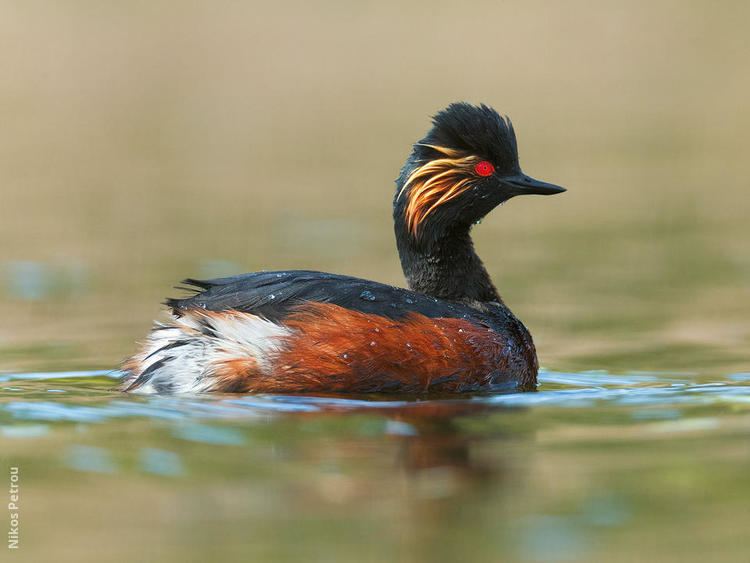 | ||
Similar Bird, Grebe, Little grebe, Horned grebe, Great crested grebe | ||
Black necked grebe
The black-necked grebe (Podiceps nigricollis), known in North America as the eared grebe, is a member of the grebe family of water birds. It is present in parts of Africa, Eurasia and North America.
Contents
- Black necked grebe
- Eared grebe black necked grebe podiceps nigricollis winter
- Taxonomy
- Description and range
- Behaviour
- References
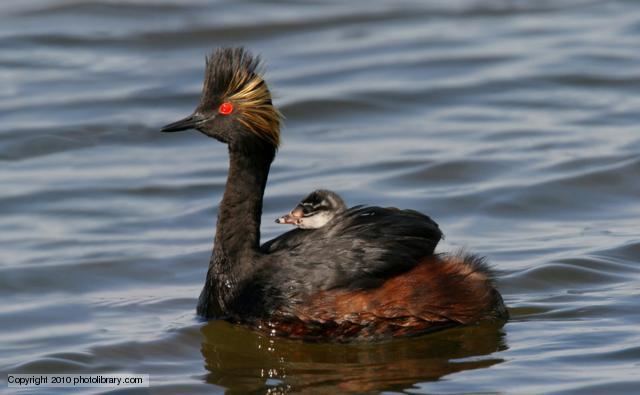
Eared grebe black necked grebe podiceps nigricollis winter
Taxonomy
There are three subspecies:
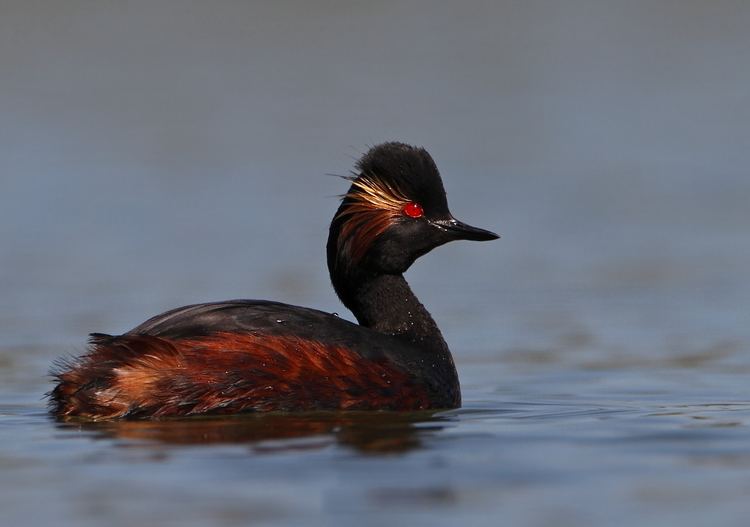
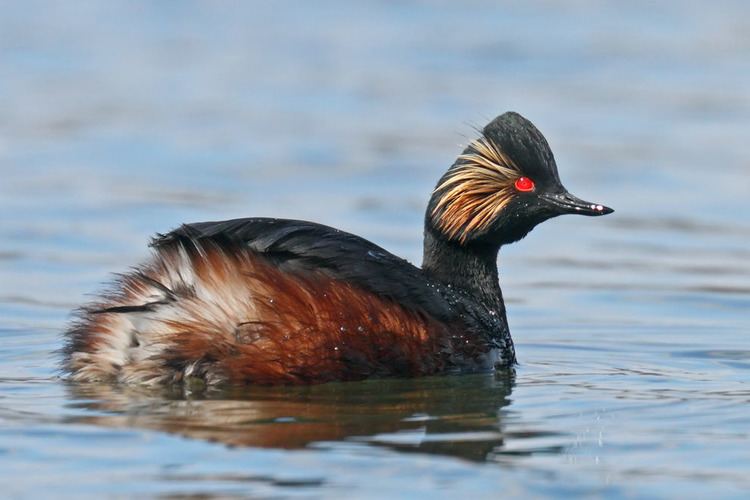
Both common names for this species refer to features visible when the bird is in its breeding plumage; in such plumage, it has an all-black neck and a spray of golden plumes on each side of its head. The name "eared grebe" was in use nearly a century before the name "black-necked grebe". The latter was first used in 1912 by Ernst Hartert, in an effort to bring the common name of the species in line with its scientific name. The genus name of this species—Podiceps—comes from two Latin words: podicis, meaning "vent" or "anus" and pes meaning "foot". This is a reference to the attachment point of the bird's legs—at the extreme back end of its body. The specific epithet nigricollis is Latin for "black-necked": niger means "black" and collis means "neck".
Description and range
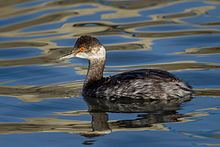
The black-necked grebe is 28–34 centimetres (11–13 in) long. The adult is unmistakable in summer, with a black head and neck and yellow ear tufts. In winter, this small grebe is white with a poorly defined black cap, which distinguishes it from the crisper-looking Slavonian grebe (horned grebe in America).
In courtship the male gives a mellow poo-ee-chk call to the female.
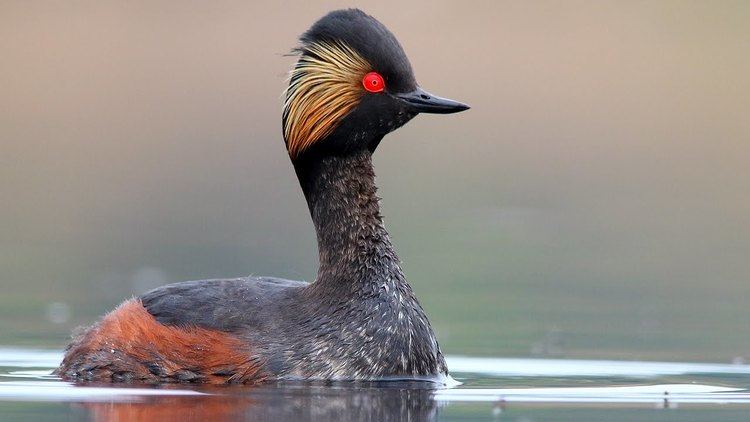
This species breeds in vegetated areas of freshwater lakes across Europe, Asia, Africa, northern South America and the southwest and western United States. The North American subspecies, P. n. californicus, is known as the eared grebe (or "eared diver"). These birds migrate in winter, mostly to the Pacific Coast where they range south to El Salvador on a regular basis; vagrants may occur as far as Costa Rica.
Black-necked grebes of the nominate subspecies P. n. nigricollis in the cooler temperate regions of the Old World also winter further south, with many European birds moving to the Mediterranean area. The isolated southern African race, P. n. gurneyi, is sedentary. It was named by South African ornithologist and author Austin Roberts in honour of the English bankers and amateur ornithologists John Henry Gurney and John Henry Gurney Jr..
The large breeding population in County Roscommon, Ireland, discovered about 1915, fell victim to a drainage scheme in the late 1930s; at its peak there were an estimated 250-300 pairs. Breeding, in very small numbers, was suspected in Ireland in 2002, 2006, and 2011, and confirmed in 2012.
Behaviour
The black-necked grebe is an excellent swimmer and diver, and pursues its prey underwater, eating mostly fish as well as small crustaceans, aquatic insects and larvae. It prefers to escape danger by diving rather than flying, although it can easily rise from the water.
Like all grebes, the black-necked grebe nests on the water's edge, since its legs are set very far back and it cannot walk well. Usually two eggs are laid, and the striped young are sometimes carried on the adult's back.
The black-necked grebe is essentially flightless for most of the year (9 to 10 months), and is one of the most inefficient fliers among avifauna. Generally, it avoids flying at all costs and reserves long-distance flight exclusively for migration. However, when migrating, it will travel as much as 6,000 km (3,700 mi) to reach prosperous areas that are exploited by few other species.
